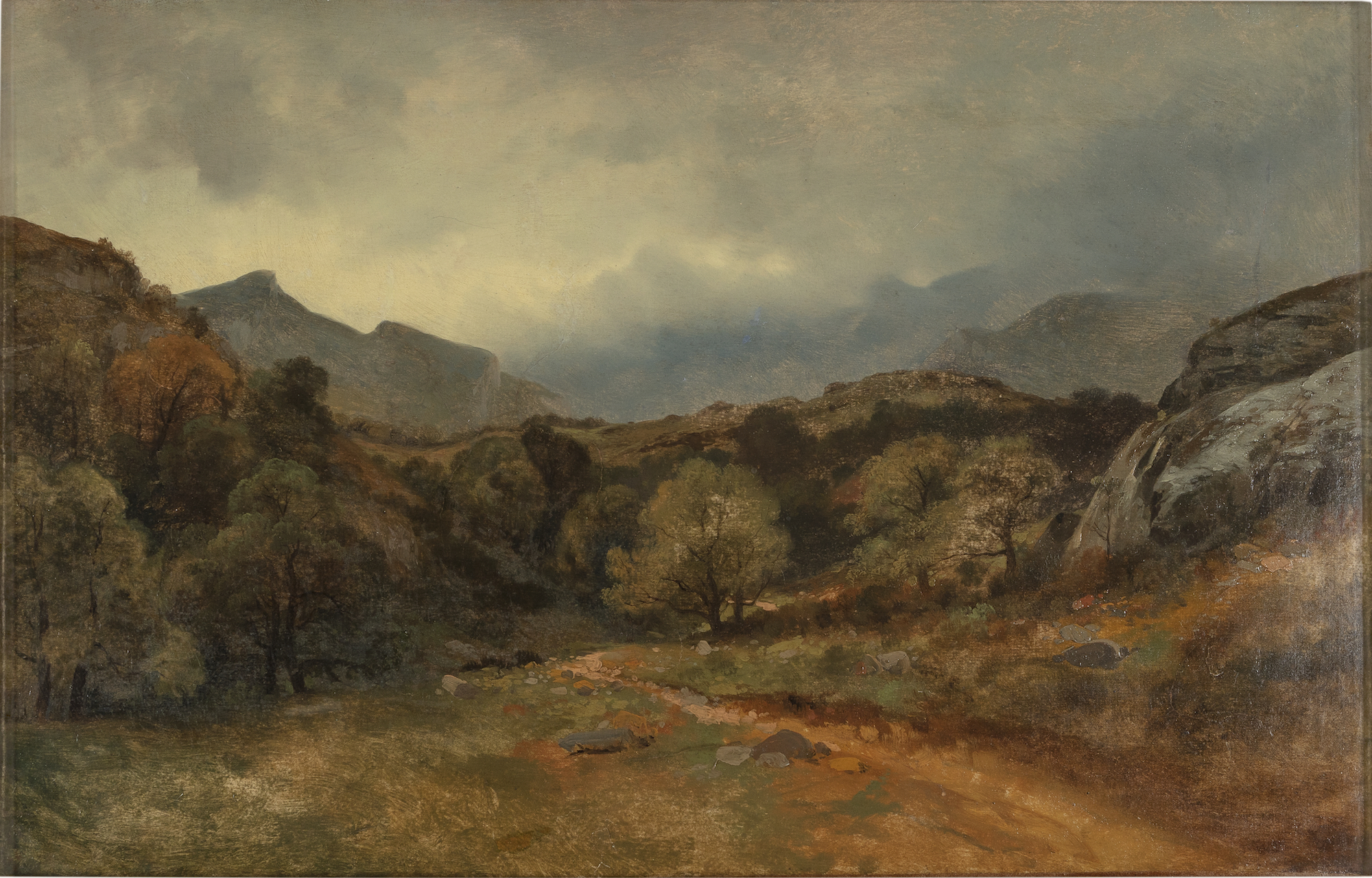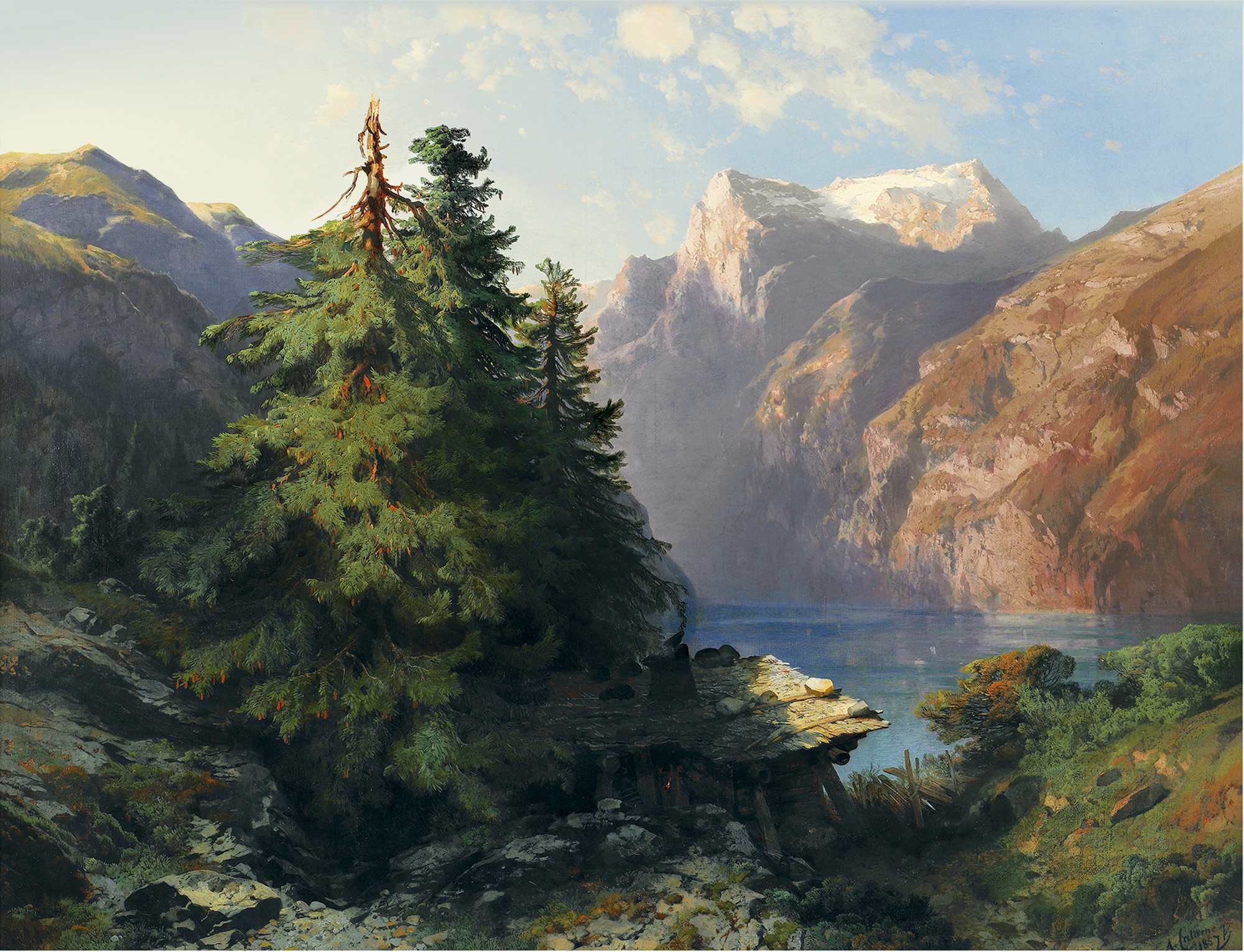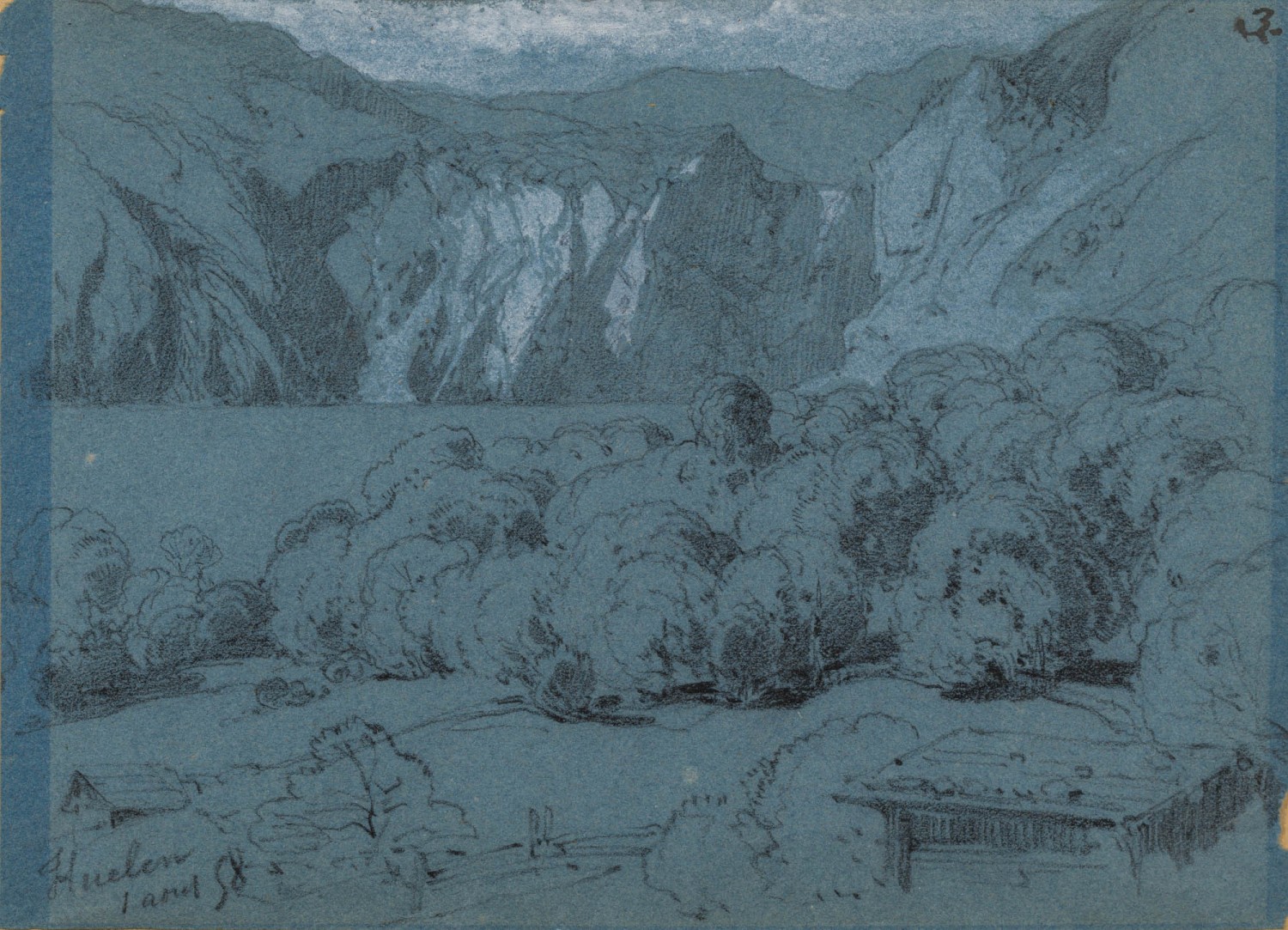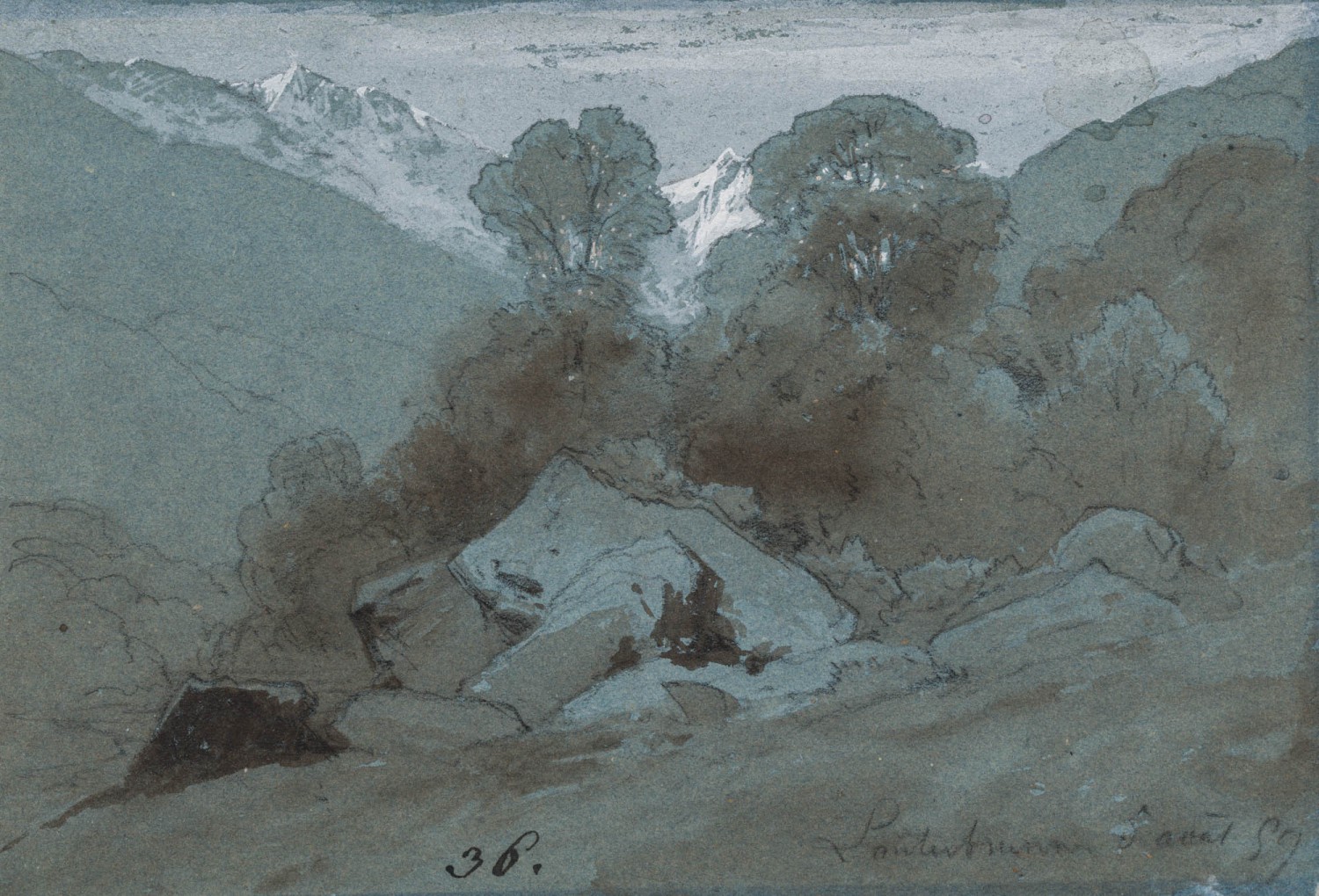Alexandre Calame is widely recognised as the greatest 19th century painter of Swiss mountains. He is born in Vevey in 1810 and arrives in 1824 in Geneva. During an impoverished childhood he suffers the loss of his right eye. At the age of nineteen, he begins a three-year stint in the studio of the Genevan painter François Diday, although he is apprenticed to the stockbroker Diodati. He makes several journeys abroad, notably to Paris and Holland by way of Düsseldorf and Cologne.
In 1839 his painting Orage à la Handeck ( Storm at Handeck – Musée d’art et d’histoire, Geneva) is awarded a prize at the Salon du Louvre and becomes the manifesto of Swiss Alpine painting in the romantic vein. Critics in Geneva now speak of a “national painting”. From then on, like his fellow painter and former teacher, François Diday, Calame enjoys a renown that earns him commissions from all over Europe (France, Germany, Great Britain, Italy, Russia).
Charles Baudelaire, speaking about Diday at the 1845 Salon in Paris, writes, “Calame and Diday. For quite some time it was thought that this was the selfsame artist suffering from chronic dualism; but since then, it has been remarked that he is fond of the name Calame on those days when he is painting well…”
Calame is indeed said to have surpassed his teacher on more than one occasion. He works from nature before executing large-format mountain landscapes in the studio. He depicts the beauties of high mountains and the charms of Lake Geneva, refined in a wild and romantic flight of painterly skill. He opens his Genevan studio to numerous students, publishes drawing lessons and engravings, is showered with honours. His painting and drawing can be found in numerous American and European museums.
In 1839 his painting Orage à la Handeck ( Storm at Handeck – Musée d’art et d’histoire, Geneva) is awarded a prize at the Salon du Louvre and becomes the manifesto of Swiss Alpine painting in the romantic vein. Critics in Geneva now speak of a “national painting”. From then on, like his fellow painter and former teacher, François Diday, Calame enjoys a renown that earns him commissions from all over Europe (France, Germany, Great Britain, Italy, Russia).
Charles Baudelaire, speaking about Diday at the 1845 Salon in Paris, writes, “Calame and Diday. For quite some time it was thought that this was the selfsame artist suffering from chronic dualism; but since then, it has been remarked that he is fond of the name Calame on those days when he is painting well…”
Calame is indeed said to have surpassed his teacher on more than one occasion. He works from nature before executing large-format mountain landscapes in the studio. He depicts the beauties of high mountains and the charms of Lake Geneva, refined in a wild and romantic flight of painterly skill. He opens his Genevan studio to numerous students, publishes drawing lessons and engravings, is showered with honours. His painting and drawing can be found in numerous American and European museums.










